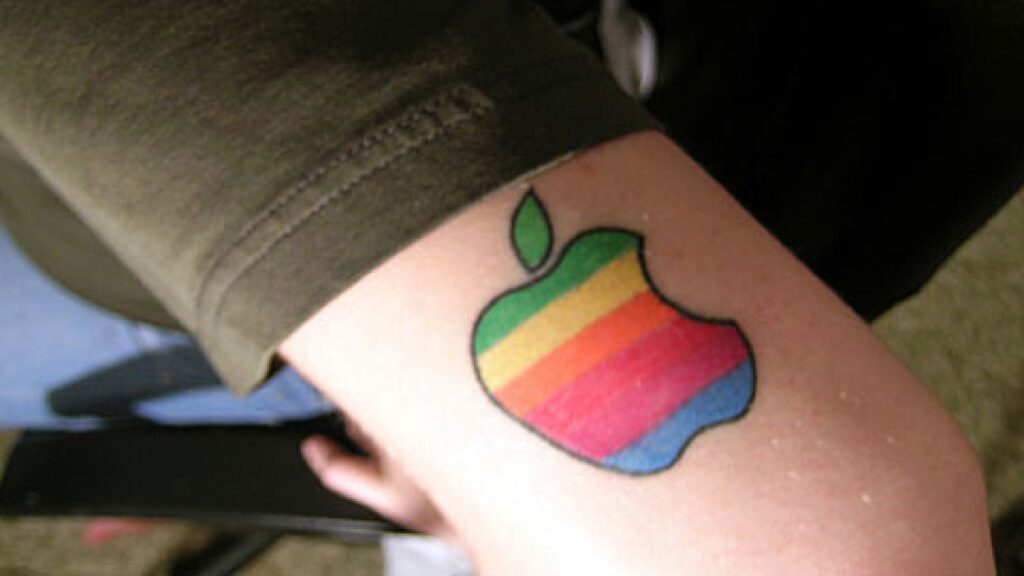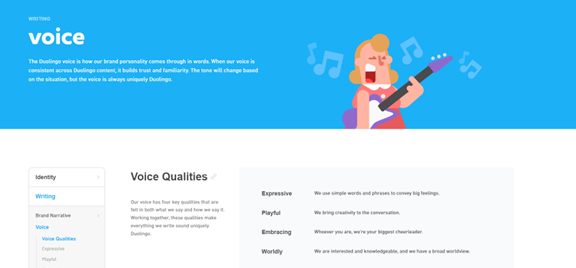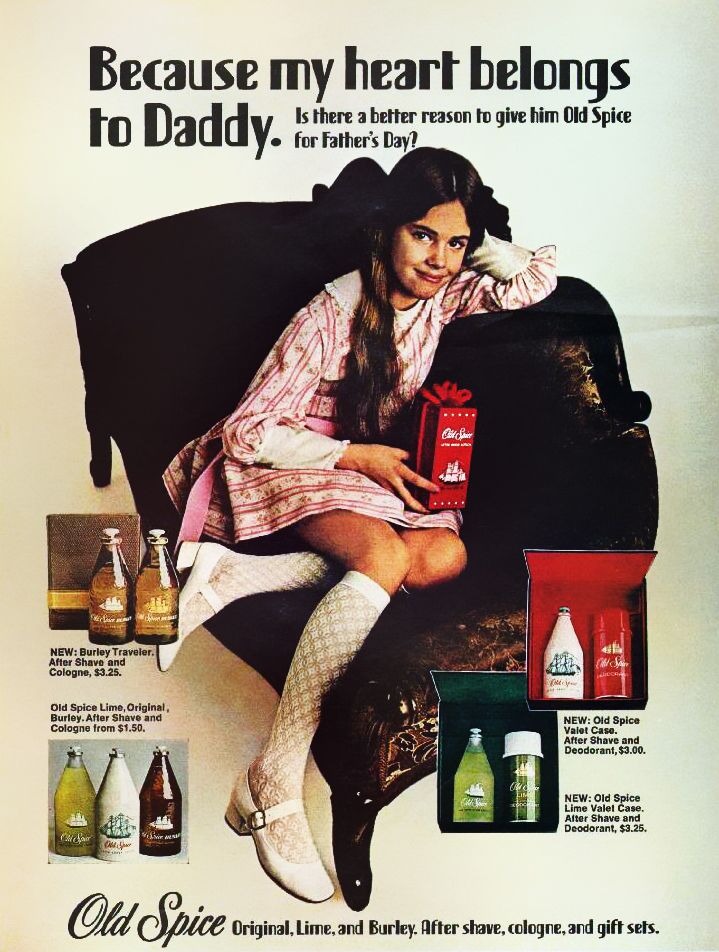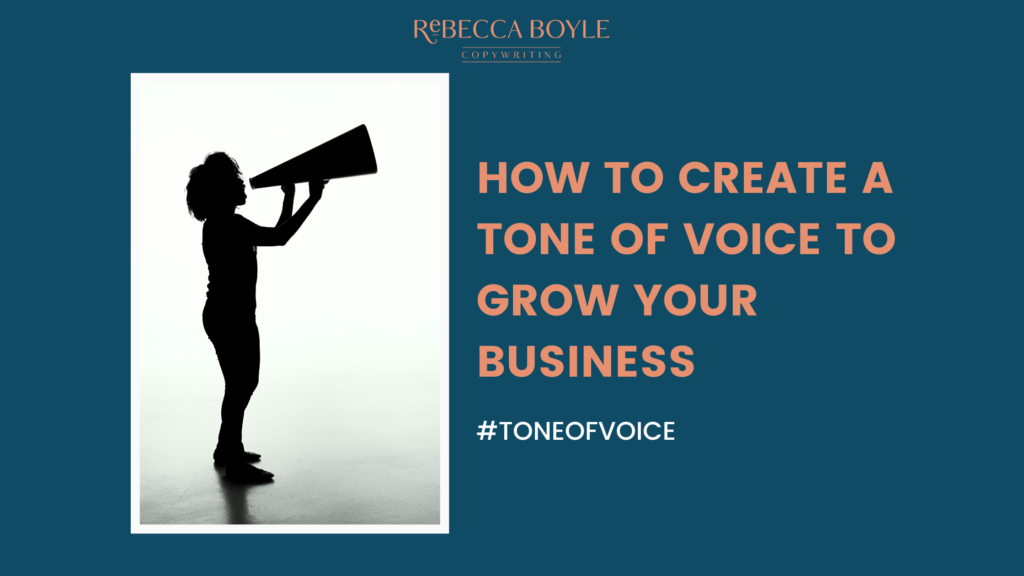Is your company missing its purpose?
It might seem a bit of a leap to think your lack of a personality can impact your bottom line, but it can.
Without a consistent tone of voice, your business doesn’t have a personality. Without that personality, you won’t stand out from competitors and customers won’t stay loyal to you.
The way you communicate can hugely affect your sales, but it’s not difficult to find your voice.
What is tone of voice?
Tone of voice is how your business consistently speaks to create a unique personality.
Look at this copy:

Can you name the brand that created this advert?
It was Virgin.
Many people can guess this without needing to see their logo or any other context.
That’s because Virgin have created a unique personality that you can spot from a mile away, just like you can detect your other half in a crowded room.
Why is tone of voice important?
Tone of voice helps you communicate both inside and outside of your organisation and allows you to:
Get clear
By getting clear on your tone of voice, you can be confident and in control of your copy.
This helps you to stop stressing about what you should be talking about.
Retain loyal customers
Creating a unique voice will help you resonate with your ideal audience. They will identify with you, just like you would with a friend.
And when customers like you, they will purchase from you, and continue to do so. Even when you make mistakes.
Acquiring new customers is difficult and more expensive than retaining the customers you have, and your loyal customers will have a higher lifetime value.
There are measurable effects of tone of voice such as increasing trustworthiness, which is a strong predictor of their willingness to recommend a brand.
Worry less about your features
When you have a unique personality, your business, doesn’t have to reply on having the best features.
You don’t have to worry about being the cheapest because your audience isn’t as concerned about price. They will buy from you because they like you, even if you are more expensive.
Look at Apple. They’re a huge company and charge a high price for their products. Their computers and phones aren’t the best products out there, but people love them. So much so, that some even get their logo tattooed on them.

Stand out from your competition
Do you want to blend into the background like Predator? (Or am I just showing my bad taste in films here?)
Anyway, I’m guessing the answer is no.
But you likely sell a product or service similar to others on the market, which means you need to be different to be noticeable.
This doesn’t mean being loud and brash.
You can still be professional, but having a consistent personality will help you resonate with your ideal audience.
imagine being at a networking event full of hundreds of people. Then think about the people who stand out. It could be someone who is incredibly passionate about what they do, someone you found you had something in common with, or someone who told you a personal story that you remember afterwards.
This is what you want to achieve with your copy. There have been many businesses whose products or services were better than their competitors, but because of their lack of personality, they didn’t inspire people to rally behind them, and they failed.
Save time
Having a documented way of writing copy can save you, and those who write for you, lots of time.
A quick look at your tone of voice guide will remind you of your key messages, which keywords to include, and the reason why you’re in business.
Make quicker (and better) decisions
Your tone of voice guide should act as a foundation block for your business and include your goals.
When you’re struggling with a decision, you can simply look at your tone of voice guide and ask yourself if saying yes will help you reach your goal.
A great example of this can be found in the book Made to Stick: Why Some Ideas Survive and Others Die by Chip and Dan Heath, and the quote is by Herb Kelleher, the longest-serving CEO of Southwest Airlines.
“Tracy from marketing comes into your office. She says her surveys indicate that the passengers might enjoy a light entree on the Houston to Las Vegas flight. All we offer is peanuts, and she thinks a nice chicken Caesar salad would be popular. What do you say?” The person stammered for a moment, so Kelleher responded: “You say, ‘Tracy, will adding that chicken Caesar salad make us THE low-fare airline from Houston to Las Vegas? Because if it doesn’t help us become the unchallenged low-fare airline, we’re not serving any damn chicken salad.'”
Southwest is known for being an affordable airline, and if anything doesn’t align with that, then the answer’s no, and the decision is made as quickly as that.
This also means that any member of Southwest can easily decide what the best thing to do is.

Brand voice vs tone of voice
Different terms can be used for tone of voice. Some might call it verbal branding or brand identity.
I like to use tone of voice because it refers specifically to your messaging, whereas branding is often thought to be the visual aspects of your business, such as logos and fonts.
How to create your tone of voice guidelines
By creating a tone of voice framework for your organisation, anyone can refer to it and understand your business.
Tone of voice guidelines can vary, but they generally include:
- Your mission
- Vision
- Brand promise
- Brand personality
- What you talk about
- Brand values
- Your tone.
It is a document that gives practical steps on how to write copy for your business and should be updated as your business grows.
Do your research
You need to understand your ideal audience so you can create copy that resonates with them.
You don’t have to be exactly like your audience but have similarities. When people are lik eus, we like them. When people value the same things we do, we like them.
Conducting thorough customer research is essential to understanding why your customers like and choose you. Then you’ll know your voice of customer and you can use this in your copy.
The same thorough research should be carried out for your competitors. You need to know what they’re doing and what they stand for so your business can be different.
Deciding on how you speak
If you’re already established, you should carry out a content audit and find out how you speak now.
Things you’ll want to think about:
How long on average are your sentences?
Do you have a more masculine or feminine tone?
Do you talk about things with a positive or negative slant?
It can be easier to think of a person you’d want your business to be like. Then use words to explain your business voice.
For example, Duolingo says their voice is expressive, playful, embracing, and worldly.
They then describe what each of these words means to them.
For instance, ‘expressive’ means using ‘simple words and phrases to convey big feelings.’
So, if someone at Duolingo wrote, ‘Timmy was disconcerted about learning a new language’, their tone of voice guide would tell them Duolingo wouldn’t use ‘disconcerted’ as it’s not a simple word.

Another great example is Formula 1 (F1). Their brand guidelines say, ‘When we talk about F1, we have to go all out to capture the spirit and soul of the sport. The fire. The obsession. The tension and euphoria.’
Some of those sentences are only two words long. The short sentences and the use of words like ‘obsession’ and ‘euphoria’ capture the fast-paced style of F1 and the emotion that the sport evokes.
Create it with a style guide
You can include a style guide with your tone of voice guide.
This is a reference guide, like the AP style guide that newspapers use to ensure all their writing is consistent.
It will contain things like your grammatical choices, if you use emojis or allow swearing, how you format your content, and your brand language (for example, famous copywriter Alex Cattoni calls her community ‘the Copy Posse’, which is unique to her brand).
Having this in your guide makes it quick and easy for anyone to write consistently for your business.
Take an example by RNLI, they include how to write boat names (in italics) and how to use figures (use words for numbers one to nine).
Implement your tone of voice
It’s no good taking all this time to create a tone of voice guide if no one knows about it.
Once you have created your tone of voice guidelines, make sure you communicate them to your staff.
Some tone of voice copywriters, such as myself, train your staff on how to use the guide and why it’s important everyone says the same thing about your business.
Update your tone of voice guidelines
Your tone of voice framework is a living document that should be updated regularly. And sometimes, after several years, you might want to change it completely.
Take Old Spice. They used to be traditional and appeal to older gentlemen. Then they turned it around completely and created funny adverts that appealed to a younger audience. And they got it spot on.

What type of business do you want to be?
A tone of voice guide acts as the foundation for your business and informs everyone in your organisation what makes you different so they can communicate it to your audience.
A tone of voice guide is what separates the companies people love from those that blend in with everyone else and may not be sustainable long-term.
Which do you want to be?
Check out my web copy packages with tone of voice guides to create a brand personality that keeps your customers coming back.

